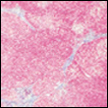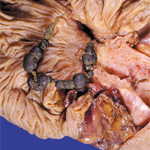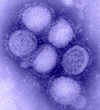|
|

Does Comparative-Effectiveness Research Threaten Personalized Medicine?
Concerns have been raised that comparative-effectiveness research (CER) will not take adequate account of individual patient differences and may impede the development and adoption of improvements in medical care. Drs. Alan Garber and Sean Tunis argue that CER offers a way to hasten the discovery of the best approaches to personalization.
|

Debate about Funding Comparative-Effectiveness Research
What’s the objection to CER? After all, scientific medicine has always been based on conducting well-designed research to determine what works. Dr. Jerry Avorn writes that the problem is that comparative studies will be threatening to makers and sellers of costly goods and services that offer no benefit over existing alternatives.
|

The Neglected Purpose of Comparative-Effectiveness Research
Drs. Aanand Naik and Laura Petersen write that surprisingly little attention has been paid to what they believe is the most critical question facing CER: Will its results significantly improve the quality and safety of the health care received by the average patient?
|

New York City’s War on Fat
The author reviews New York City’s efforts to combat obesity by banning the use of trans fat in restaurants and requiring chain restaurants to post calorie information on menu boards. She discusses the restaurant industry’s ongoing legal challenges to these new policies.
|

 Scleroderma
Scleroderma
This account highlights the genetic and molecular changes that cause the vascular changes and fibrosis in scleroderma. The role of autoantibodies is unclear. The authors outline a stepwise process that begins with inflammation, reaches its zenith in fibrosis, and ends in atrophy.
|

 Muscling In on Fat
Muscling In on Fat
Adipocytes that make up brown fat have two disparate lineages; one seems more closely related to muscle than to white adipose tissue.
|

 A Red Flag
A Red Flag
A 64-year-old man was brought to the emergency department because of sudden-onset blurred vision in both eyes and diplopia, as well as a frontal headache. On presentation, he was noted to have an altered mental status. (View a video of an echocardiogram.)
CME Exam
|

 Long-Term Safety and Efficacy of Drug-Eluting versus Bare-Metal Stents in Sweden
Long-Term Safety and Efficacy of Drug-Eluting versus Bare-Metal Stents in Sweden
The long-term risk of death or myocardial infarction was similar among patients who received bare-metal coronary stents and those who received drug-eluting stents. The rate of restenosis was lower among patients who received drug-eluting stents, especially among those at increased risk for restenosis.
CME Exam
|

 Paclitaxel-Eluting Stents versus Bare-Metal Stents in Acute Myocardial Infarction
Paclitaxel-Eluting Stents versus Bare-Metal Stents in Acute Myocardial Infarction
Acute ST-segment elevation myocardial infarction is often treated with immediate coronary stenting of the infarct-related artery. The use of a paclitaxel-eluting stent, as compared with a bare-metal stent, reduced the risk of restenosis and was equally safe.
|

 Epilepsy, Ataxia, Sensorineural Deafness, Tubulopathy, and KCNJ10 Mutations
Epilepsy, Ataxia, Sensorineural Deafness, Tubulopathy, and KCNJ10 Mutations
Whole-genome linkage analysis in children with normotensive hypokalemic metabolic alkalosis, epilepsy, ataxia, sensorineural deafness, and tubulopathy identified a single relevant locus on chromosome 1q23.2 containing KCNJ10, which encodes a potassium channel expressed in the brain, inner ear, and kidney.
|

 STIM1 Mutation Associated with a Syndrome of Immunodeficiency and Autoimmunity
STIM1 Mutation Associated with a Syndrome of Immunodeficiency and Autoimmunity
This report describes three siblings with susceptibility to infections, autoimmune hemolytic anemia, immune thrombocytopenia, lymphadenopathy, and hepatosplenomegaly. DNA from one of the siblings showed a homozygous mutation in STIM1, a protein involved in store-operated Ca2+ entry into cells. These cases illustrate that Ca2+ entry is a requirement for lymphocyte activation.
|

 Vaccine Refusal and the Risks of Vaccine-Preventable Diseases
Vaccine Refusal and the Risks of Vaccine-Preventable Diseases
In the United States, the rate of exemption from immunization requirements has increased. The major reasons for vaccine refusal are parental concerns about vaccine safety and a low level of concern about the risk of the diseases that vaccines prevent. Clinicians play a crucial role in parental decisions about immunization.
Free Full Text
CME Exam
|



 H1N1 Influenza — Information
H1N1 Influenza — Information Scleroderma
Scleroderma Muscling In on Fat
Muscling In on Fat A Red Flag
A Red Flag Long-Term Safety and Efficacy of Drug-Eluting versus Bare-Metal Stents in Sweden
Long-Term Safety and Efficacy of Drug-Eluting versus Bare-Metal Stents in Sweden Paclitaxel-Eluting Stents versus Bare-Metal Stents in Acute Myocardial Infarction
Paclitaxel-Eluting Stents versus Bare-Metal Stents in Acute Myocardial Infarction Epilepsy, Ataxia, Sensorineural Deafness, Tubulopathy, and
Epilepsy, Ataxia, Sensorineural Deafness, Tubulopathy, and 
 Vaccine Refusal and the Risks of Vaccine-Preventable Diseases
Vaccine Refusal and the Risks of Vaccine-Preventable Diseases